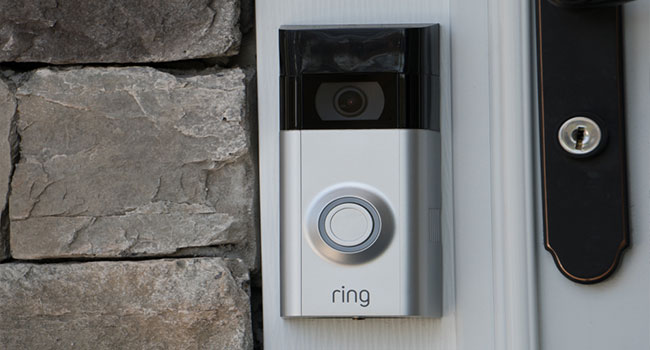
Doorbell Camera Company Ring Has Partnered With Over 400 Police Departments
Law enforcement agencies who have partnered with Amazon-owned Ring can request videos from residents and interact with users on its app, Neighbors.
- By Haley Samsel
- Aug 30, 2019
The Amazon-owned smart doorbell camera company Ring has partnered with 405 police and law enforcement agencies across the U.S., allowing those departments to request videos recorded by residents and ask for help in investigating crimes.
On Wednesday, the company released an “Active Law Enforcement Map” showing which law enforcement agencies have already partnered with Ring and its app, Neighbors. The map, which will continuously updated, allows users to search if their community police department has partnered with Ring, which had not previously disclosed all of its law enforcement partners.
“The mission has always been making the neighborhood safer,” Eric Kuhn, the general manager of Neighbors, told The Washington Post. “We’ve had a lot of success in terms of deterring crime and solving crimes that would otherwise not be solved as quickly.”
Through the partnership, police can request videos recorded by cameras within a specific time and area, allowing them to see footage from some of the millions of web-connected cameras installed at doorsteps across the country. The footage is not given out unilaterally -- users who receive law enforcement requests can decline to hand over the video, and officers do not have ongoing or live access to videos, according to Ring.
Still, the scope of Ring’s relationship with police forces has provoked privacy concerns about the extent of video surveillance footage available to law enforcement, which they worry could lead to investigations of innocent people and violations of civil liberties.
Evan Greer, the deputy director of the digital and privacy rights advocacy group Fight for the Future, told VICE News that Ring’s video surveillance infrastructure makes it much easier for police to obtain video footage of an incident without going through the process of getting a court order.
“Amazon built an app for [requesting footage], making it exponentially easier for police to collect footage from exponentially more surveillance cameras blanketing our cities,” Greer said. “Since it costs them nothing to send a request for footage, there's nothing stopping police from doing this all the time, even for petty crimes. And once footage has been handed over to the cops, there's no limit on how long they can keep it or what they might do with it in the future."
There are no public numbers on how many times law enforcement agencies have requested videos, how many videos they received from Ring users, or how many times those videos have led to arrests or convictions.
As part of the partnerships, Ring also benefits financially, as police forces encourage residents to buy the cameras -- which have been made more affordable since Amazon bought the company in 2018 -- and download the Neighbors app. Police forces have also been provided with discounts on cameras and templates from Ring on how to ask for video footage and update residents on investigations, according to documents obtained by VICE News.
But some officers have been uncomfortable with the perception that they’re pushing a particular product, including Radd Rotello, an officer for the Frisco, Texas police department, which has partnered with Ring. “We as the police department are not doing that,” he told the Post. “That’s not our place.”
Rotello said that the growth of Ring in Frisco has made people believe that “crime is rampant” in the city because of the local crime map featured in the Neighbors app. There are positive aspects to that, he said, including an increased vigilance about crime and greater awareness of what goes on in the city.
“Would you rather live in an ‘ignorance is bliss’ type of world?” Rotello said. “Or would you rather know what’s going on?”